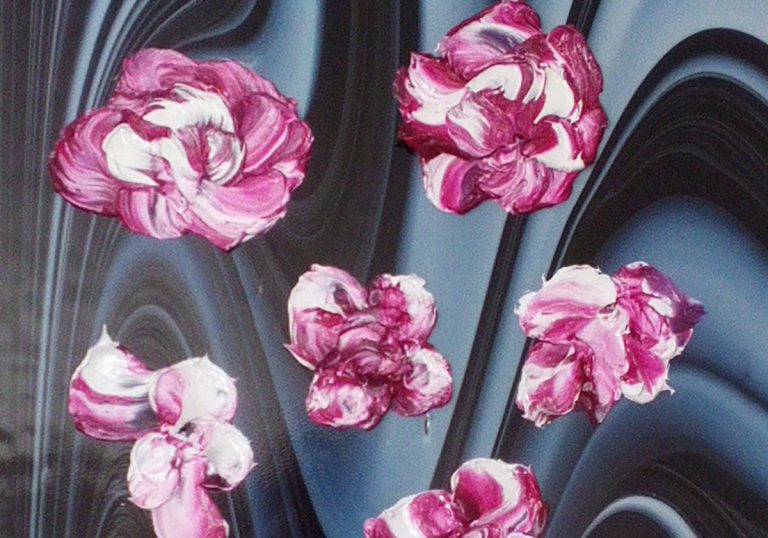Michael Sabin doesn’t just make art—he wrestles with material. Whether it’s molten glass or thick daubs of paint, Sabin brings a tactile intensity to his work that is unmistakable. Based in upstate New York, in the Finger Lakes region famously known as Mark Twain Country, Sabin’s artistic life has always been shaped by his surroundings. Raised in a small town, his early exposure to natural beauty, quiet landscapes, and working-class culture carved a path that would ultimately wind through both glass and paint.
At 23, Sabin took a job in the glass factories of Corning—an experience that would shape his understanding of light, surface, and reflection. Over the years, while continuing to work in the city known as the Crystal Capital of the World, he deepened his commitment to painting. His artworks now straddle these two disciplines: the cool, solid glow of glass and the raw, expressive immediacy of oil and pastel. His recent flower-based paintings, in particular, feel like a fusion of both worlds—shimmering, layered, and built with physical presence.
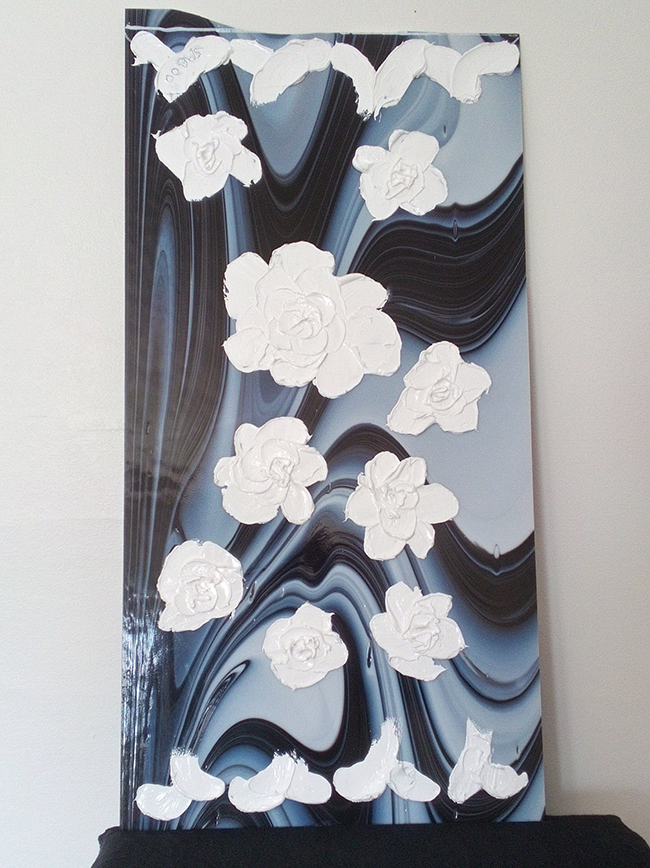
Sabin’s current series leans heavily into texture. These are not flat paintings. They stand off the surface, demand to be read with your eyes and your fingers. The floral motifs are built with thick, sculptural strokes that almost push into relief sculpture territory. At a glance, they read as straightforward blossoms—roses, petals, sprays—but closer inspection shows an intentional distortion. These aren’t botanical studies. They’re expressions.
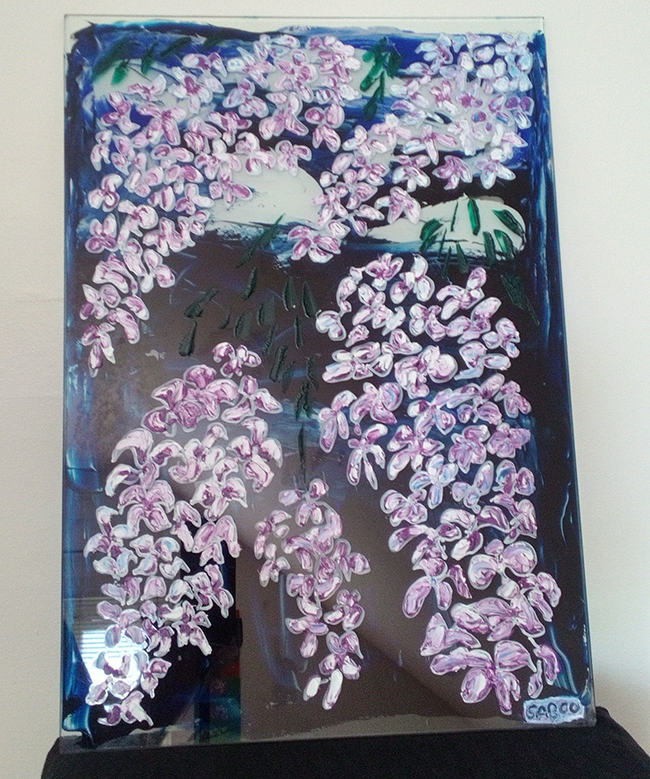
In the first painting, white flowers are laid over a black-and-gray marbled background. The blooms seem ghostlike—bright but heavy. They’re carved out of paint like they’ve been molded, not brushed. Above and below, pale white wings or petals stretch out like punctuation marks. There’s a tension in the composition: stillness fighting motion, memory resisting erasure. It’s monochrome, but not quiet.
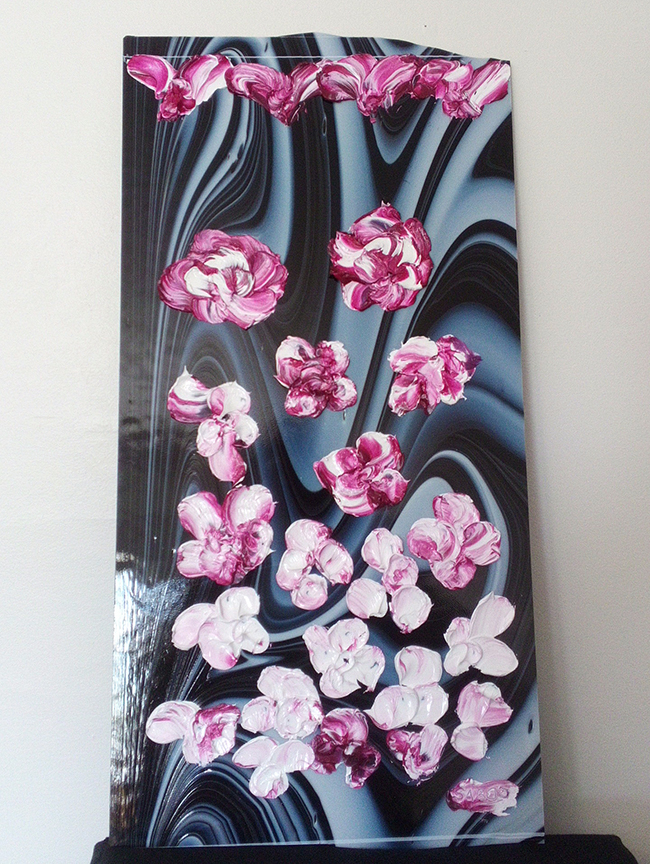
In the second image, Sabin shifts into full color. A dense cascade of lilac-like blossoms spills across the surface. There’s a looseness here—a layered energy. The flowers seem caught in a gust of wind. The brushstrokes feel rushed, urgent. Lavender, pink, and white are stabbed onto the surface in rounded, rhythmic motions, evoking wisteria or flowering vines. The dark background—nearly black in some places—adds weight. These flowers don’t float. They cling and crawl. A signature, “SABOO,” sits in the corner, almost like graffiti, grounding the painting in personal territory.
By the third and fourth works, Sabin is back to that high-gloss, marbled backdrop—black, gray, and blue waves that feel like polished stone. But the flowers now burn bright in shades of red, pink, and fuchsia. The effect is jarring in a good way. The contrast is total: soft petals against a cold, hard void. In one piece, the blooms are scattered with more space, giving each shape a kind of isolation. In the next, they’re densely packed, almost clustering into abstract forms.
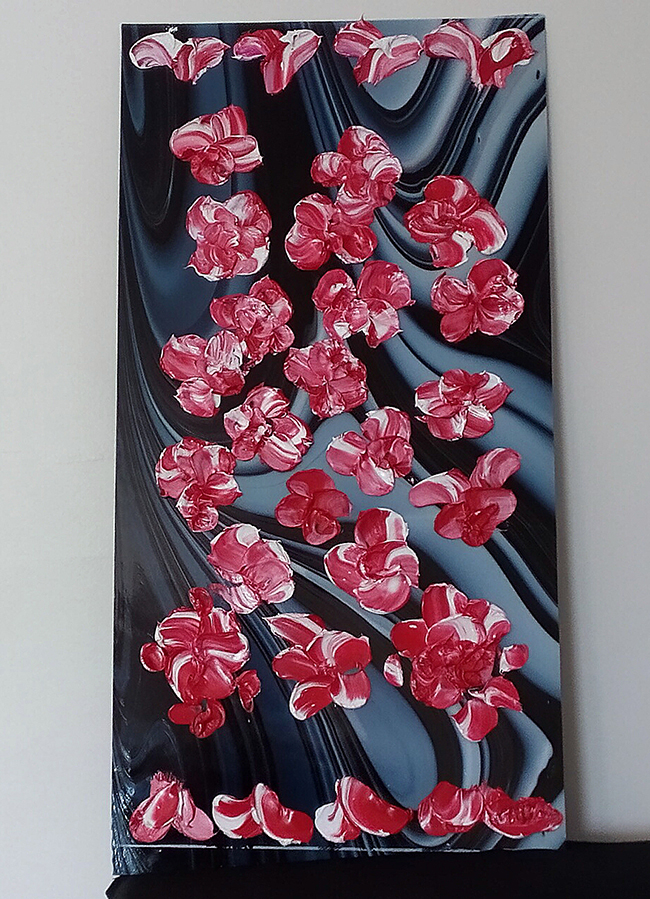
What’s compelling here is how Sabin treats the flowers not as symbols of beauty, but as building blocks for something more emotional. These works don’t feel romantic. They feel urgent. Flowers, often delicate and disposable, are rendered here with force. You see the pressure of the artist’s hand, the sweep of his arm. The gloss of the background reflects light like glass, while the paint absorbs it—like a tug-of-war between two worlds Sabin knows well.
There’s also a sense of layering, not just visually but emotionally. You can feel the years of factory shifts behind the weight of the paint. You can sense a history of craftsmanship—of precision—being let loose in service of something raw and expressive. This isn’t about perfection. It’s about presence.
For Sabin, working in Corning’s glass world has clearly influenced his visual language. The way light interacts with surface, the pull of reflection and opacity, the discipline of repetition—all these things find echoes in his painting. But there’s also a breaking away from glass’s rigid fragility. In paint, Sabin gets messy. He piles. He smears. He sculpts. And the results are alive with tension and tactile beauty.
Michael Sabin’s paintings are flowers, yes—but they’re also statements. About labor. About memory. About holding form in chaos. And like glass, they reflect far more than what’s immediately on the surface.


